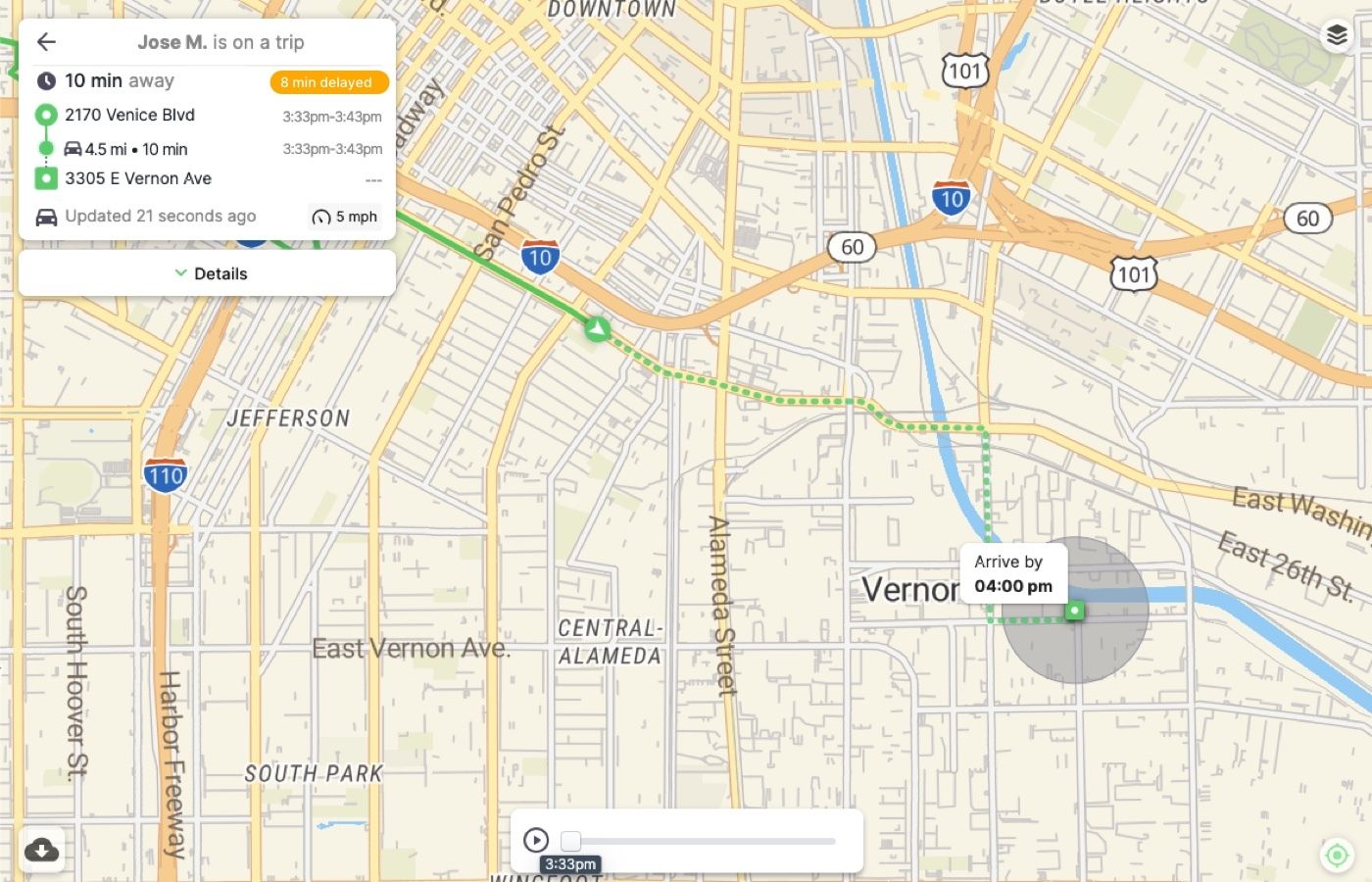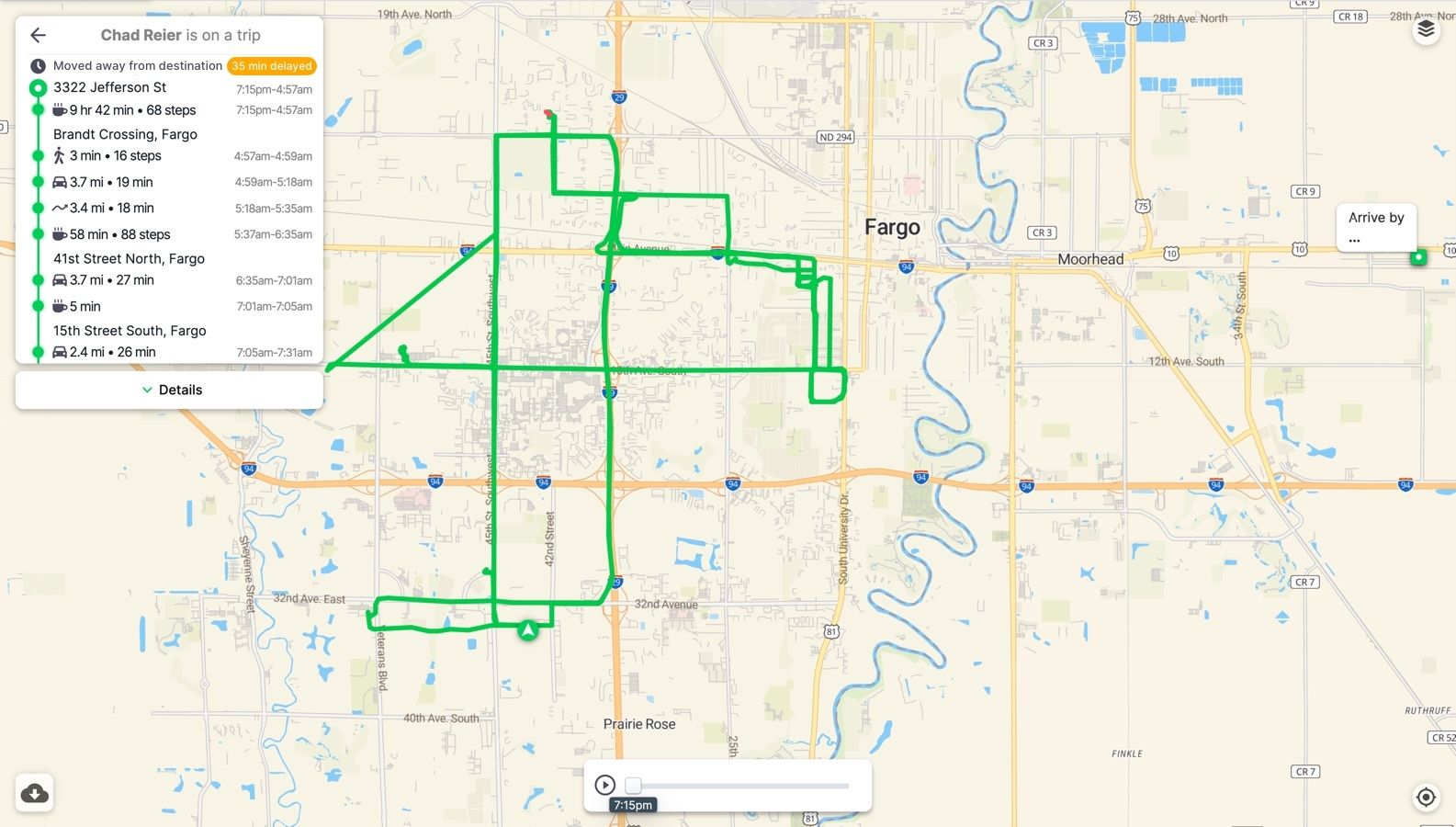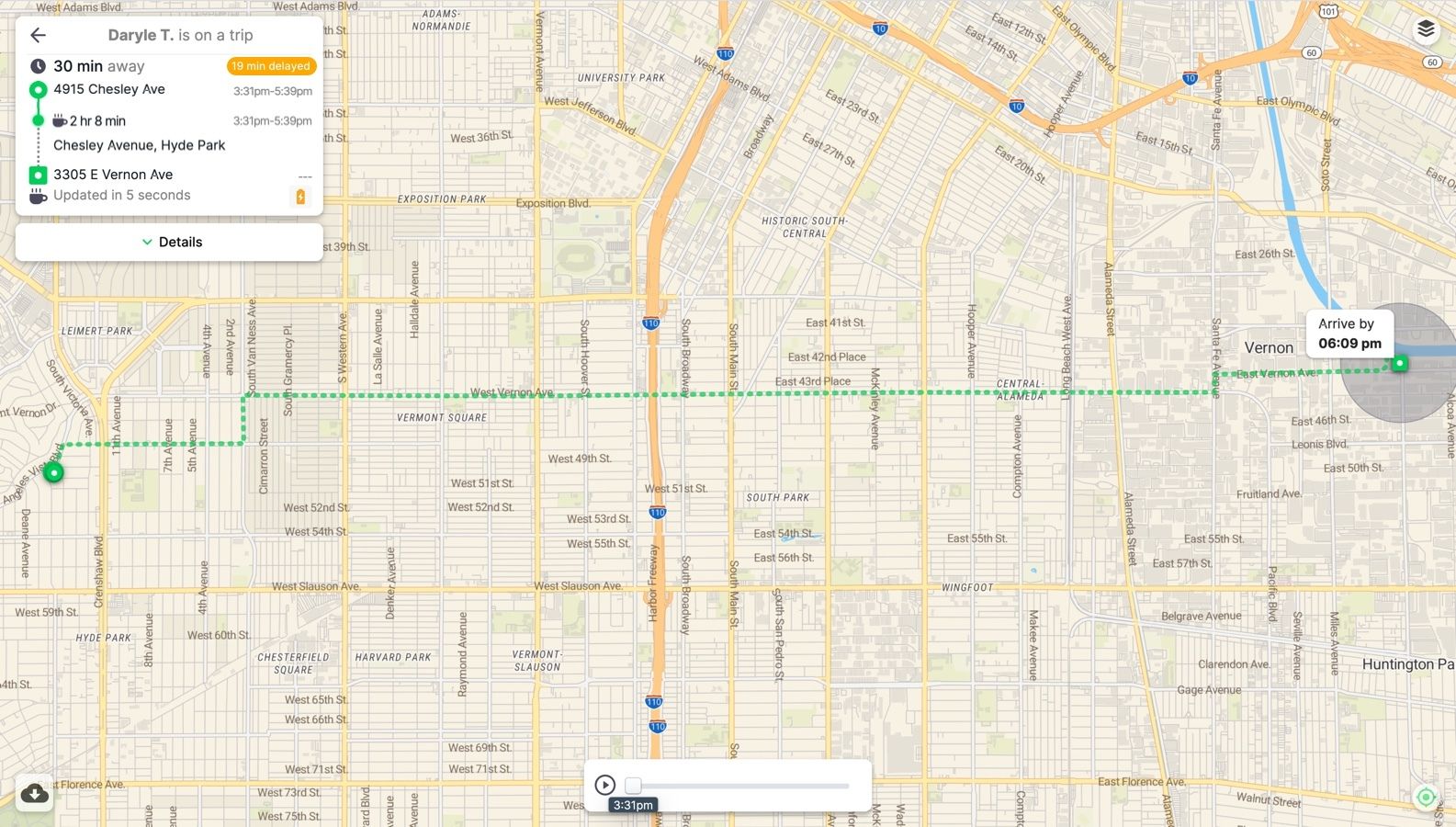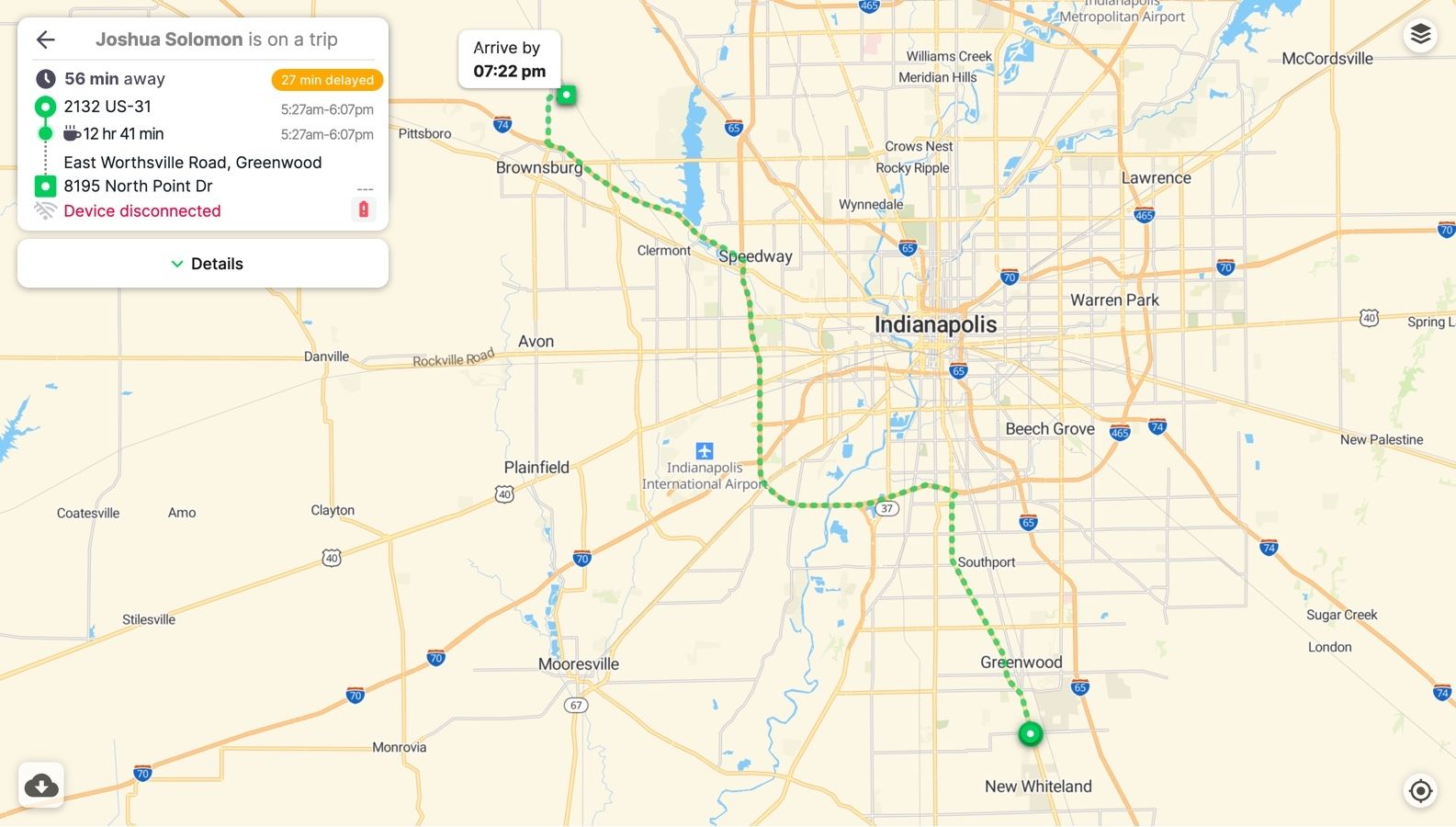No-shows are the worst nightmare for logistics fleets. No operations manager wants to spend hours in a day finding out about a no-show from the customer, and then scramble in the moment of anxiety to rescue the situation.
HyperTrack has five ways to catch no shows before they happen!
Note: All examples in this post use real trips that have been anonymized to protect customers' privacy.
1. Driver is delayed on the way

We use live location to infer delays. Delay is likely when the estimated route and ETA with live traffic conditions suggests a delay past scheduled time of arrival. Delays are notified over webhooks so you can automate next steps. Delays are flagged in ops views for each driver, order, and entire fleet, so ops managers can keep an eye on delays and take corrective action.
Customer support teams find it especially useful to replay trips to confirm customer and driver claims when escalations happen. Replays enable non-repudiation because these views can be shared as links with either party as needed.
2. Driver is moving away from destination

We use live location to infer movement away from destination. No-show is likely when the estimated route distance and ETA to destination keeps increasing despite movement, and the driver seems to have no intention to get to the destination. In the example above, the green square on the right indicates the destination. The driver is moving, though not toward the destination. ETA becomes irrelevant.
There is the occasional issue with incorrect customer addresses, or a higher priority task that needed to be fulfilled before heading to the destination. In such scenarios, being aware of the driver's intent on the way is useful to proactively address a potential escalation.
3. Driver is delayed and stationary

We use activity transitions to infer that the driver is stationary, or driving, or walking. No-show is likely when the driver is stationary at a place and the order is running delayed beyond schedule time of arrival. The delay webhook includes activity so you may take corrective action for this specific scenario, such as sending a text message or notification to the driver, or re-assigning the order.
Activity transition data provided by the phone OS is noisy. We make it more accurate with additional processing. This way, you can rely on this data to take action. For instance, benign stops at a traffic light are eliminated while stops at places are retained.
4. Driver disables location permission

We use device and app level permissions to infer driver's intent to be tracked while fulfilling an order. No-show is quite likely when the driver denies location permission after order assignment or while on the way.
Drivers often mention excessive battery drain and data usage as reasons to turn off permission. However, for most Android and iOS devices, the additional battery and data usage due to background location tracking is marginal. Custom ROMs and old devices might have higher battery impact. In general, our data suggests high correlation between denied permissions and low productivity.
5. Driver becomes un-trackable on the way

We use device health and battery to infer driver becoming un-trackable while fulfilling an order. In this example, the driver's battery went in the red and subsequently, the driver went off the radar. Modern delivery management, field service management, and fleet management apps require the driver to provide confirmations in the app to fulfill an order. Such confirmations require a functional and connected device at the time of fulfillment. In that sense, a dead device is as good as a non-operational driver.
When the phone is charging again, and the driver opens the app to re-connect with services, HyperTrack captures these events and syncs up the batched locations when available. This helps operations get the extra visibility around what might have happened during the outage.
No-shows are the worst nightmare for logistics fleets. Even one in two hundred orders with a no-show lead to a loss of face, customer support escalations, social media mentions, and overall trust deficit in the network.
Live location data plays a critical role in detecting delays. Sophisticated implementations can shine a light on actionable reasons that help ops teams proactively address no-shows before they happen.
Sign up with HyperTrack and follow this guide to implement this capability in your app. Make no-shows a thing of the past!




